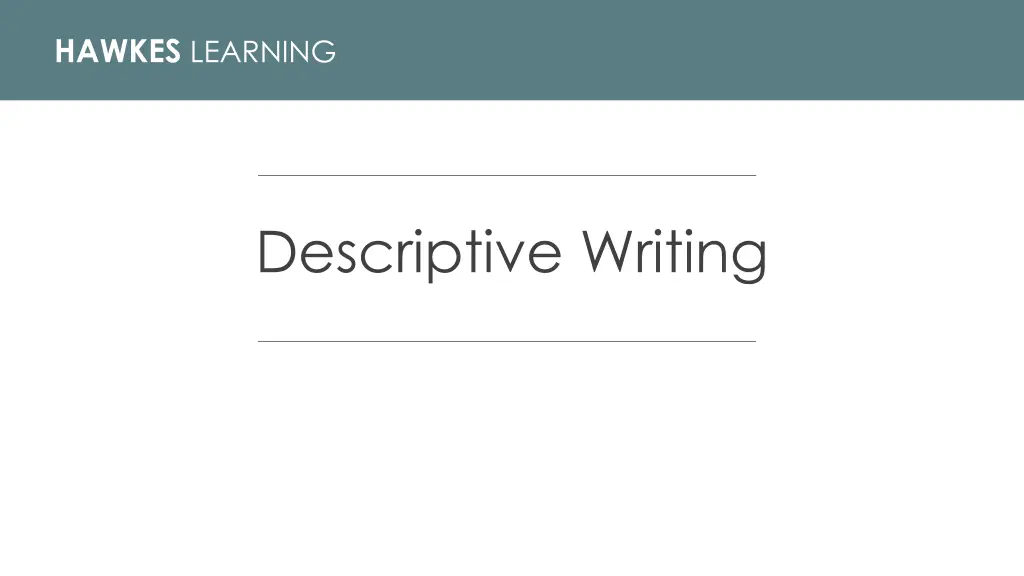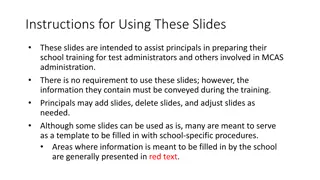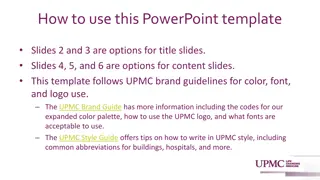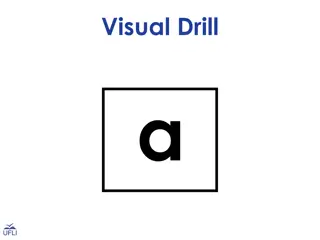
Mastering Descriptive Writing Skills
Explore the key elements of descriptive writing with Hawkes Learning resources. Learn how to effectively communicate characteristics and qualities, enhance descriptions with sensory details, and create impactful imagery. Discover techniques for organizing words, sentences, and paragraphs to engage readers and evoke emotions. Dive into the art of showing rather than telling, pacing and emphasizing, and setting the mood of your writing. Enhance your writing with strong language choices, sentence, and paragraph organization for a compelling narrative.
Download Presentation

Please find below an Image/Link to download the presentation.
The content on the website is provided AS IS for your information and personal use only. It may not be sold, licensed, or shared on other websites without obtaining consent from the author. If you encounter any issues during the download, it is possible that the publisher has removed the file from their server.
You are allowed to download the files provided on this website for personal or commercial use, subject to the condition that they are used lawfully. All files are the property of their respective owners.
The content on the website is provided AS IS for your information and personal use only. It may not be sold, licensed, or shared on other websites without obtaining consent from the author.
E N D
Presentation Transcript
HAWKES LEARNING Descriptive Writing
Lesson Goals Key elements of descriptive writing Organizing words, sentences, and paragraphs Different types of description Enhancing description with sensory details HAWKES LEARNING
Descriptive Writing Communicates the characteristics and qualities of a thing or event Purpose Show, don t tell Key elements Pacing and emphasis Mood HAWKES LEARNING
Key Elements of Descriptive Writing Purpose: The goal of the text Show, don t tell: Create an image for the reader Pace: The movement/speed of language Mood: The overall emotion of the text HAWKES LEARNING
Purpose The elegant gray-haired woman, who had recently celebrated the birth of her first grandchild, received the news of her cancer diagnosis in what seemed like slow motion. She eased into the plastic office chair, frowned, and said nothing for several long moments. When informing a patient of a malignant tumor, oncologists should provide thorough information while also maintaining a sympathetic demeanor. HAWKES LEARNING
Show, Dont Tell John Nelson was afraid to go into battle. John Nelson balled his sweaty fingers into fists and dug his nails into his palms as the sound of gunfire approached. HAWKES LEARNING
Pacing and Emphasis Spend less time on minor Spend more time on details the main points HAWKES LEARNING
Mood The room was empty, with pale walls lit by harsh fluorescent bulbs. The room, with golden walls and bright lights, was ready to be filled with students. HAWKES LEARNING
Strong vs. Weak Parts of Speech Strong Weak sprinted ran explored went argued said shuffled walked pondered thought devoured ate HAWKES LEARNING
Sentence and Paragraph Organization Contributes to the mood of writing Emphasize certain ideas or words HAWKES LEARNING
Abstract vs. Concrete Abstract Concrete vs. Theoretical and Physical and specific non-specific HAWKES LEARNING
Avoid Clichs Actions speak louder than words. The grass is always greener on the other side. You can t judge a book by its cover. Laughter is the best medicine. HAWKES LEARNING
Sensory Details and Figurative Language Sensory details: Descriptions that appeal to our senses Figurative language: Nonliteral words or word groups Simile: Metaphor: Makes a direct but nonliteral connection between two things Indicates similarities between two things through comparative words






















